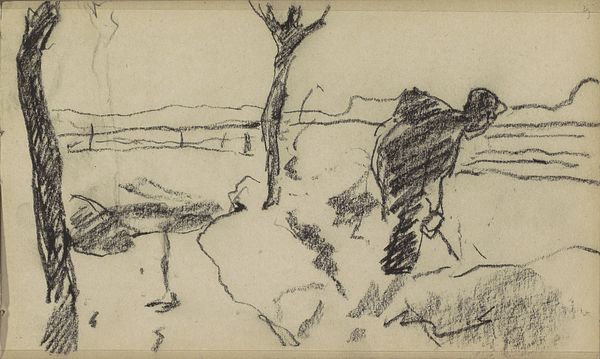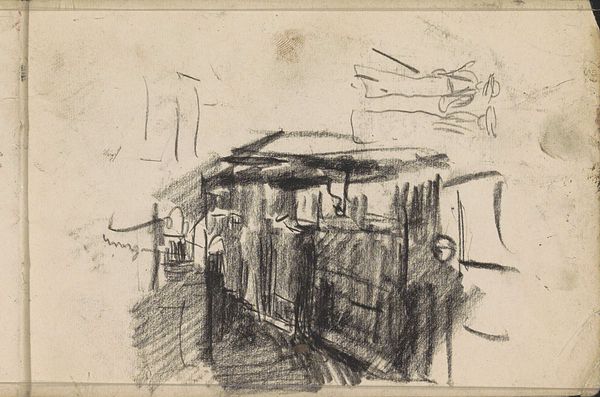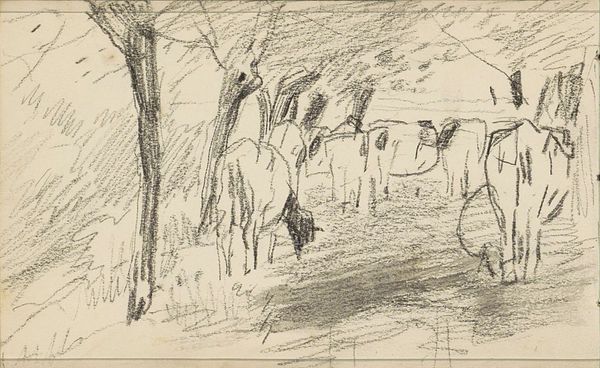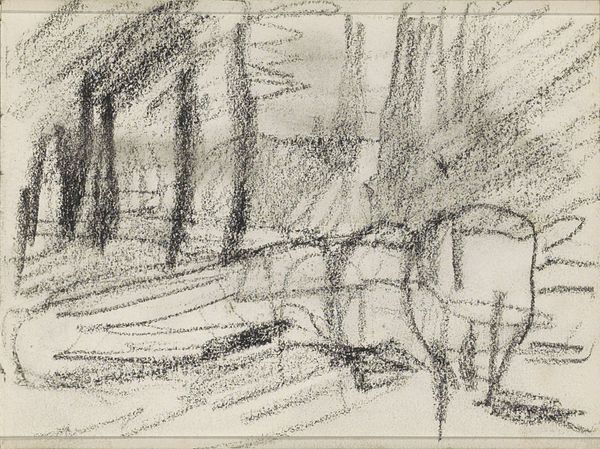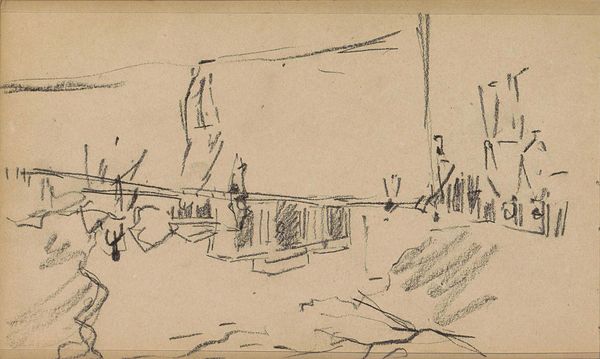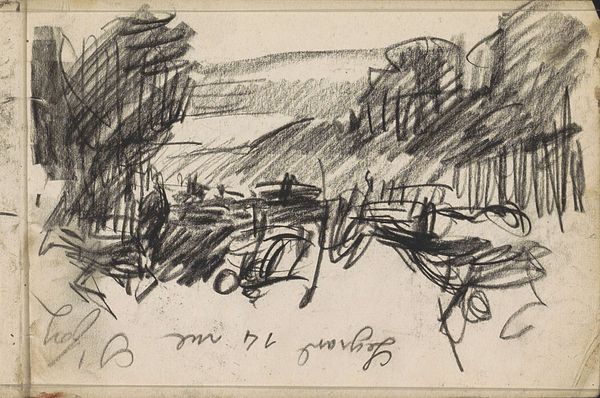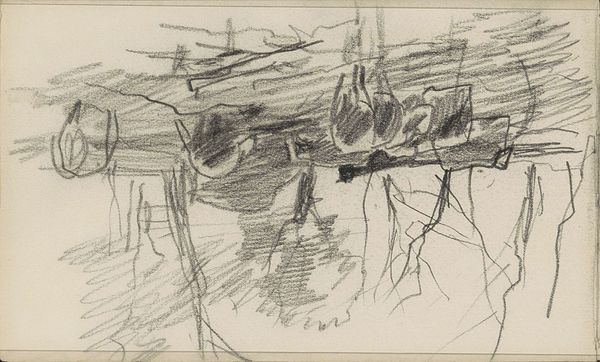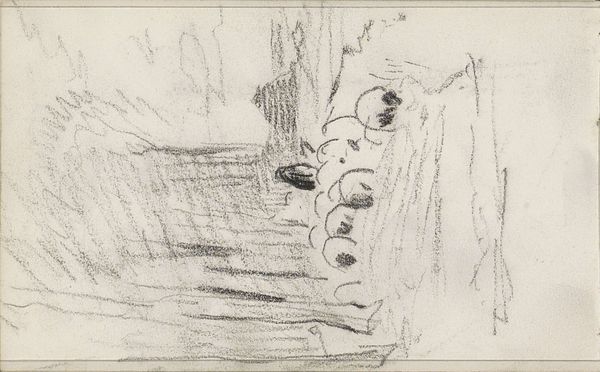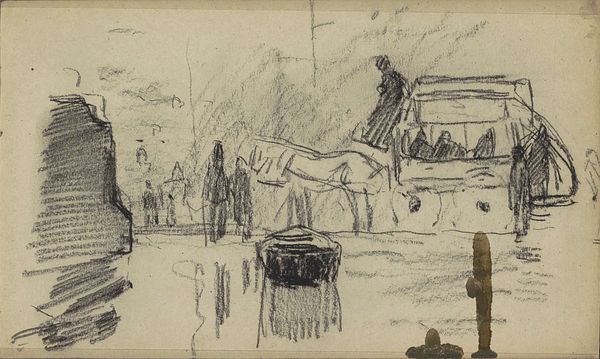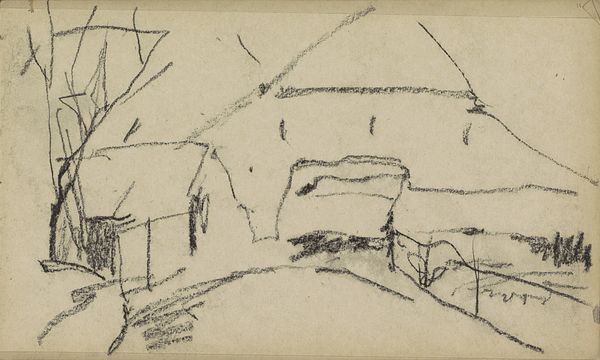
Copyright: Rijks Museum: Open Domain
Curator: Well, hello there. We're standing before "Rijtuigen op Straat" which roughly translates to "Carriages on the Street", a graphite drawing from the late 19th or early 20th century, housed here at the Rijksmuseum, crafted by the talented Isaac Israels. Editor: The first thing that jumps out is the light. Or, rather, the strategic use of darkness to imply it. It feels like a memory flickering back into focus. Does that make sense? The mood is subdued, a touch melancholic. Curator: It does. There's a sketch-like quality, immediate and unrefined, typical of Impressionism. We know Israels captured the fleeting moments of everyday life, favoring movement and atmosphere. These carriages suggest that sense of motion within urban bustle. The heavy dark strokes give form to figures without delineating the details. It also emphasizes transience, in my understanding. Editor: Precisely. It's like a dream. It’s a scene observed from a moving train—a suggestion of figures and the stark urban background as dark, opposing blocks—both receding back as we try to hold on to the instant we are in. This visual language invites your memory to fill in those very particular stories and sensations. How does the composition guide our feelings here, visually speaking? Curator: The use of graphite enables gradations, moving back from firm strokes of solid tone. Those dense, almost blocky forms in the immediate fore and middle grounds establish depth and suggest volume, particularly on that side-rear carriage; you see the weight of the people inside even though we are missing any of their finer facial details. That stark treatment could represent that tension, that opposition. How would that contrast be reflected culturally at the time? Editor: The speed, the modernity—these new sights would inspire both an excitement and an anxiety that you had a responsibility to observe in detail or else to avoid entirely. Think of the flaneur! This work sits at that exciting threshold when urban life transforms so radically. What do you take away after this analysis? Curator: For me, it highlights how artistic approaches to modernity preserve their initial impressions. I am moved that so much information is preserved in only tonal blocks that leave more unsaid than explicitly expressed, and I am also struck by Israels' commitment to understanding our shared human experience, expressed in those feelings. Editor: It leaves me feeling nostalgic, though perhaps for an imagined past. That capacity of art to provoke and make meaning out of its interpretation…I like it very much.
Comments
No comments
Be the first to comment and join the conversation on the ultimate creative platform.

